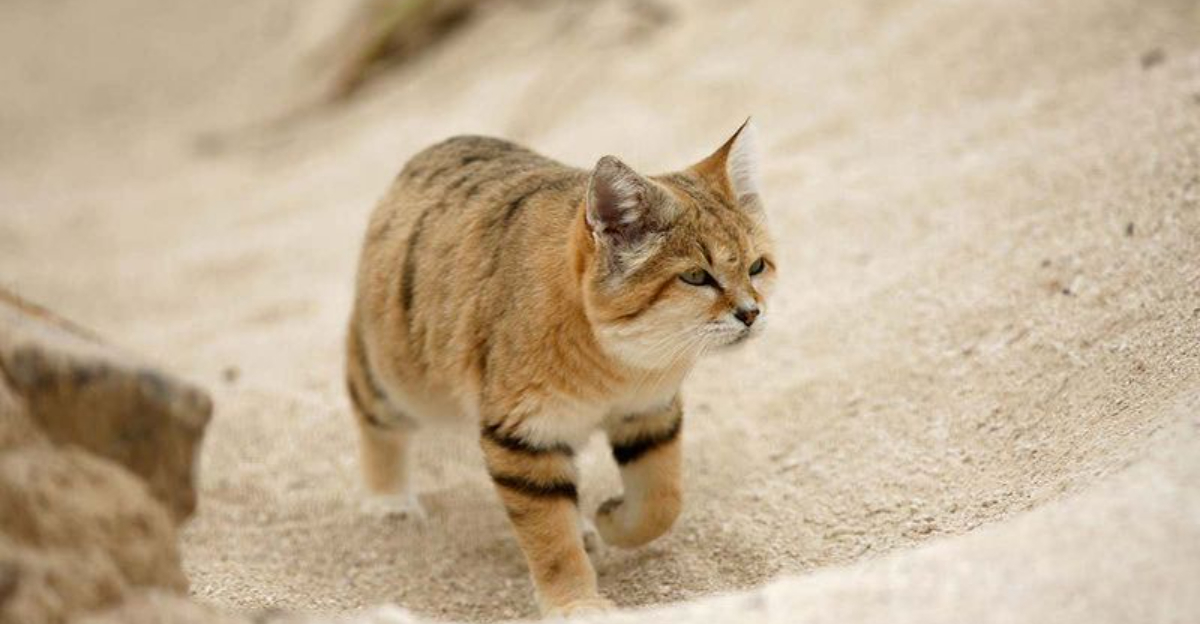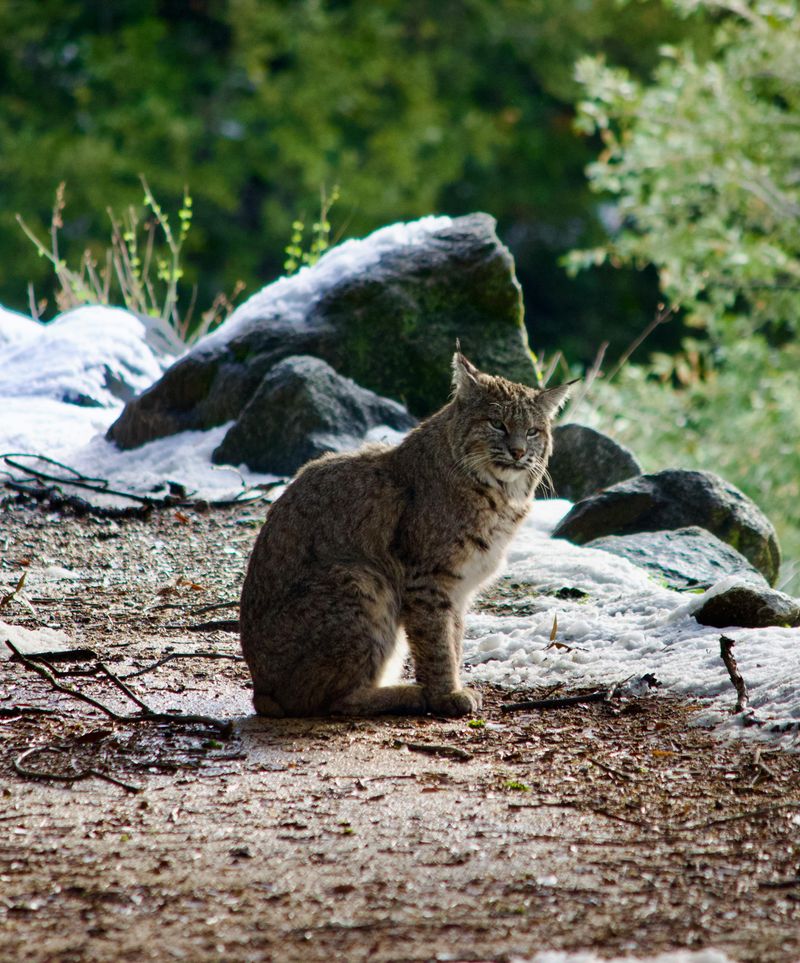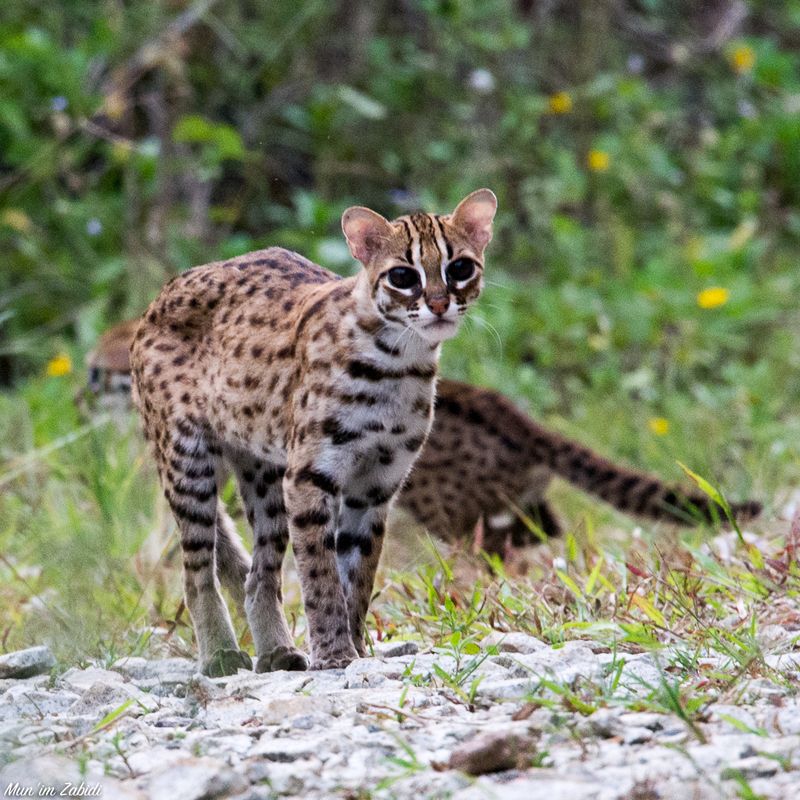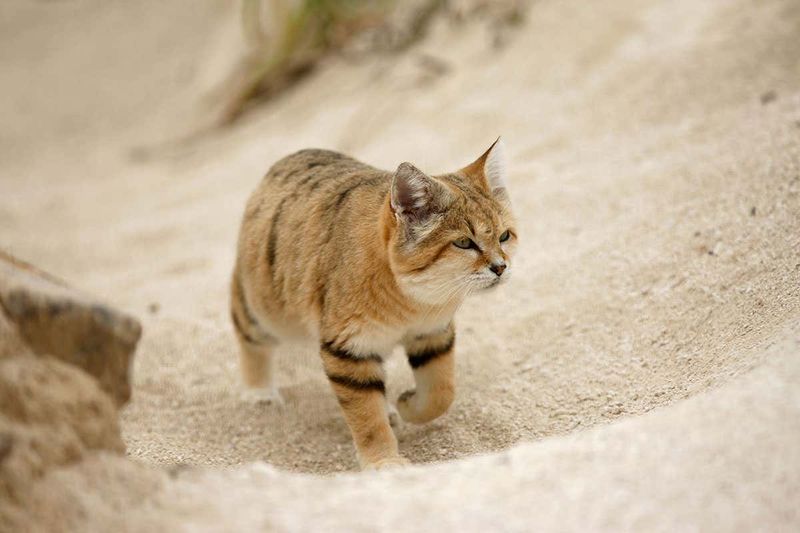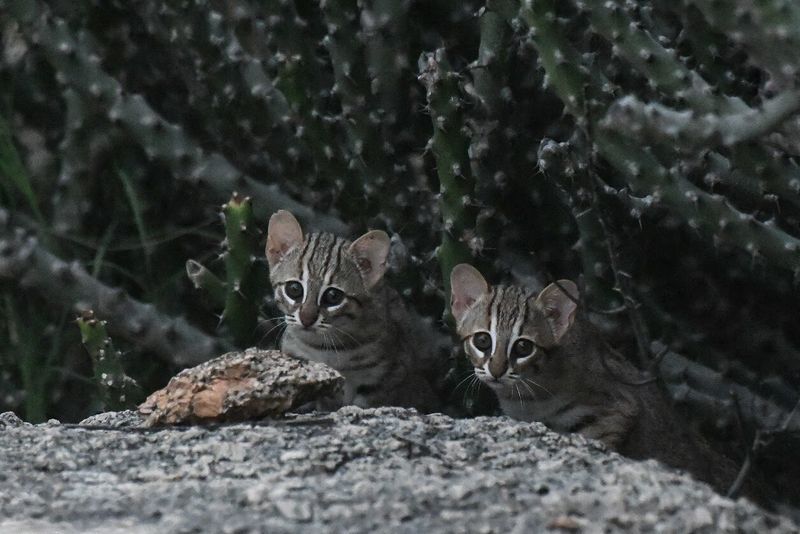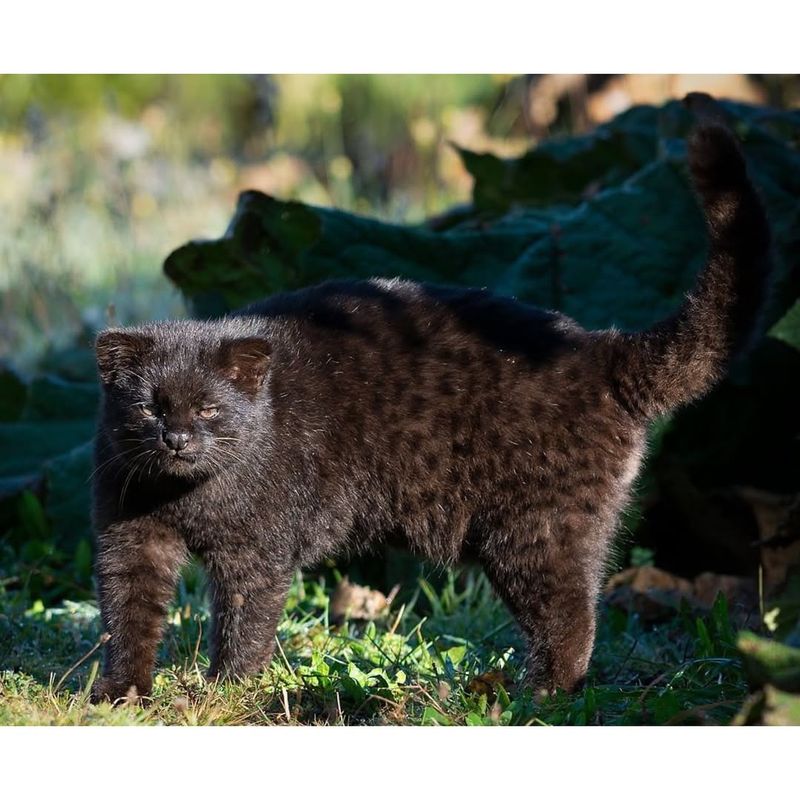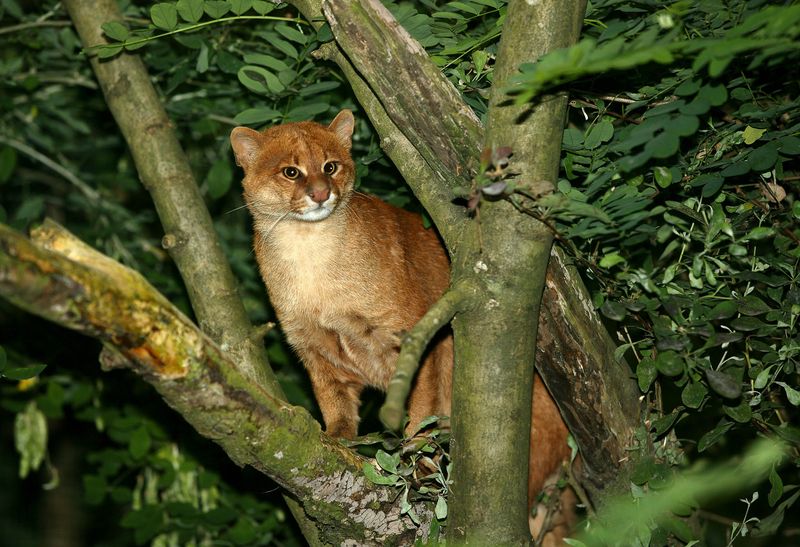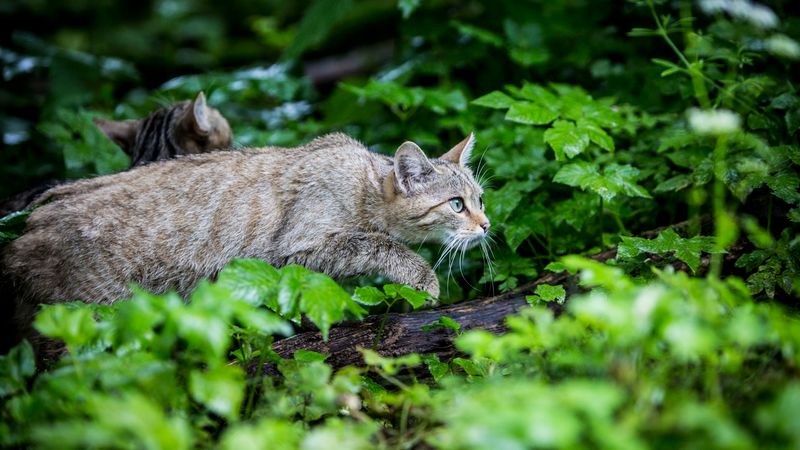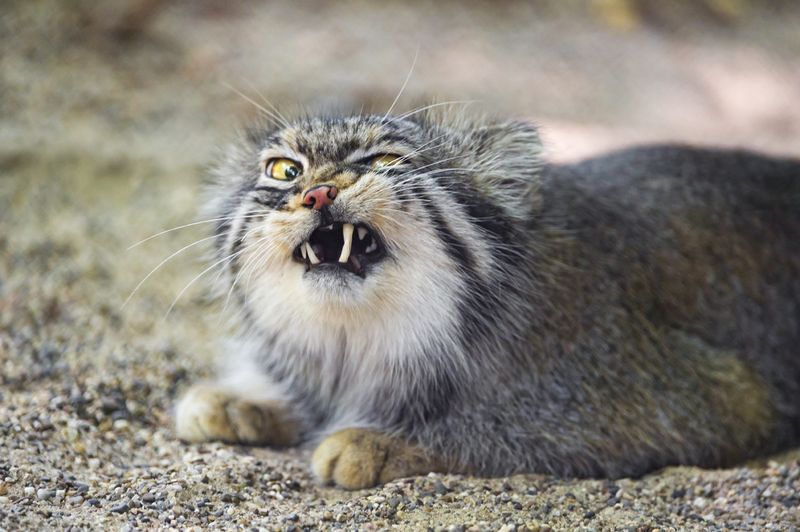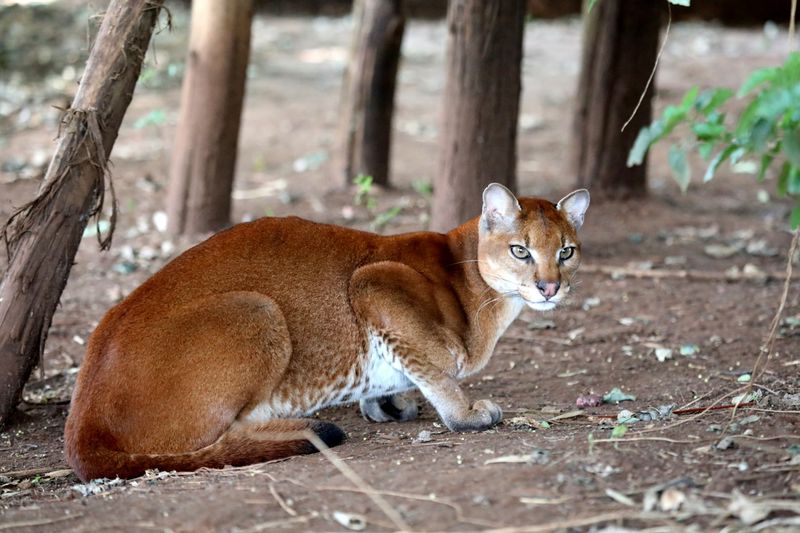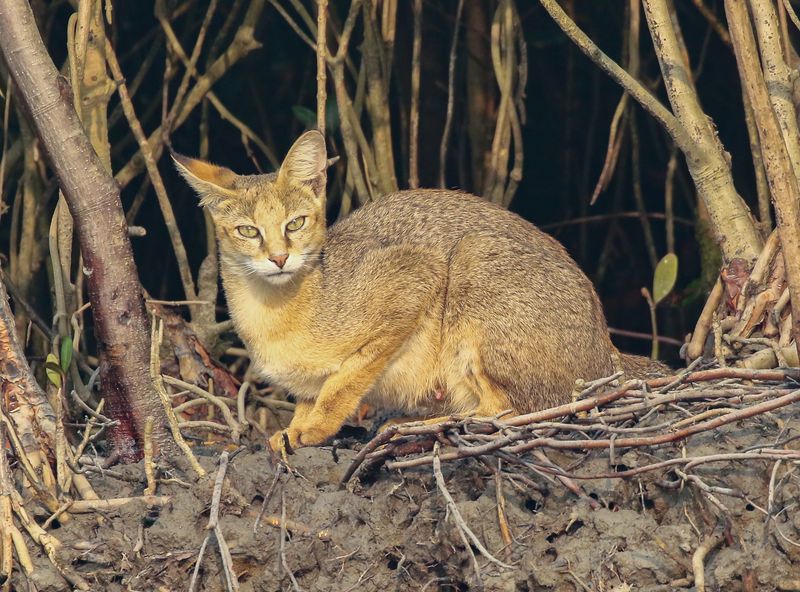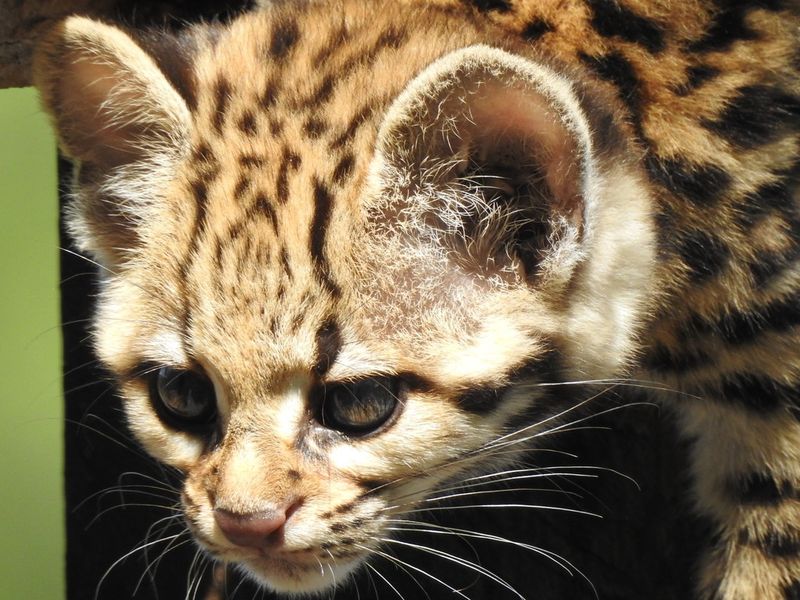📖 Table of Content:
- 1. Bobcat (Lynx rufus) – North America
- 2. Leopard Cat (Prionailurus bengalensis) – Asia
- 3. Sand Cat (Felis margarita) – North Africa & Central Asia
- 4. Rusty-Spotted Cat (Prionailurus rubiginosus) – India & Sri Lanka
- 5. Kodkod (Leopardus guigna) – South America
- 6. Jaguarundi (Herpailurus yagouaroundi) – Central & South America
- 7. European Wildcat (Felis silvestris) – Europe & the UK
- 8. Pallas’s Cat (Otocolobus manul) – Central Asia
- 9. African Golden Cat (Caracal aurata) – Central & West Africa
- 10. Black-Footed Cat (Felis nigripes) – Southern Africa
- 11. Jungle Cat (Felis chaus) – South and Southeast Asia, Middle East
- 12. Ocelot (Leopardus pardalis) – Central and South America
Wild cats are often thought of as distant, untamed predators roaming vast wildernesses, but many species live much closer to human habitats than we realize. These elusive felines have adapted to a variety of environments, from dense forests to suburban edges, where they skillfully navigate the landscape in search of food and shelter. Despite their secretive nature, some have been spotted venturing into backyards, blending into the shadows of human settlements. Their ability to coexist near civilization makes them both mysterious and captivating creatures of the natural world.
Each wild cat species has its own unique traits and behaviors that help it survive in different ecosystems. Some, like the bobcat and the ocelot, rely on stealth and camouflage to avoid detection, while others, like the fishing cat, are skilled swimmers that hunt in wetlands. The adaptability of these felines allows them to thrive in unexpected places, from snowy mountain ranges to arid deserts. Though they are rarely seen, their presence is often marked by tracks, distant calls, or subtle signs of hunting activity. Understanding these hidden predators gives us a deeper appreciation of the delicate balance between wildlife and human expansion.
The presence of wild cats near human settlements raises important questions about conservation and coexistence. As urban areas expand, these felines face increasing threats from habitat loss, road accidents, and conflicts with people. However, efforts to protect natural corridors and preserve green spaces can help ensure their survival. By learning about these wild neighbors and respecting their habitats, we can foster a more harmonious relationship with the wildlife that shares our world.
1. Bobcat (Lynx rufus) – North America
Bobcats, found across the U.S., Canada, and Mexico, are highly adaptable creatures. Often seen at dawn or dusk, these feline hunters venture into suburban areas seeking food such as rabbits and rodents. The clearing of forests for housing developments has brought them closer to human dwellings. They are known for their solitary nature and stealthy movements. If your backyard borders a wooded area, it might just be part of a bobcat’s hunting ground. While they generally avoid humans, bobcats are curious and may explore out of necessity when searching for food or shelter.
2. Leopard Cat (Prionailurus bengalensis) – Asia
Native to forests and farmlands in India, China, and Southeast Asia, the Leopard Cat is a small yet fierce predator. Due to deforestation, they often roam near villages and agricultural lands, becoming occasional visitors in backyards. These cats are adept hunters, preying on rats and chickens. On the outskirts of cities, particularly where farmland meets urban areas, they make their presence known. Leopard cats are solitary by nature, and their nocturnal habits make them elusive. Their adaptability to changing environments is a testament to their survival instincts.
3. Sand Cat (Felis margarita) – North Africa & Central Asia
Living in the harsh deserts of North Africa and Central Asia, sand cats are masters of stealth and survival. Known for their ability to remain undetected, they are sometimes drawn to human settlements in search of water during prolonged droughts. These tiny predators might venture into oases, villages, or even campsites. Despite their size, sand cats are formidable hunters, preying on small rodents and insects. Their pale, sandy fur serves as perfect camouflage in their desert habitat, making them nearly invisible to the untrained eye. Look for their tiny paw prints in sandy areas.
4. Rusty-Spotted Cat (Prionailurus rubiginosus) – India & Sri Lanka
Among the world’s smallest wild cats, the rusty-spotted cat, found in India and Sri Lanka, is known for its agility and small size. As farmland encroaches into forests, these cats sometimes enter backyards to hunt rodents. Agile and quick, they are often mistaken for domestic cats but can be differentiated by their unique rust-colored spots. In some regions, they have been seen sneaking into barns or storehouses in search of food. Their ability to adapt to changing landscapes highlights their resilience. Despite their proximity to human dwellings, they remain elusive and rarely seen.
5. Kodkod (Leopardus guigna) – South America
The smallest wild cats in the Americas inhabit the dense forests of Chile and Argentina. As these forests are cut down for farmland, kodkods have adapted by hunting near villages and rural homes. They are excellent climbers and have been known to sneak into backyards at night, preying on birds, mice, and occasionally small chickens. These nocturnal hunters are shy and elusive, often staying hidden from human eyes. Their adaptability to new environments ensures their survival, even as their natural habitats shrink. Observing them is a rare and remarkable experience.
6. Jaguarundi (Herpailurus yagouaroundi) – Central & South America
Unlike most wild cats, jaguarundis are diurnal and often seen near rivers, grasslands, and farmlands. As cities expand, these small, weasel-like cats may wander into backyards seeking rodents, water, or shelter. Their presence can benefit farmers by controlling rodent populations. Jaguarundis have a unique appearance, with sleek bodies and long tails. Their adaptability allows them to thrive in various environments, from dense forests to open fields. Their curious nature often leads them to explore new territories, sometimes bringing them into closer contact with human habitats.
7. European Wildcat (Felis silvestris) – Europe & the UK
The elusive European wildcat, resembling a large domestic cat, prowls the forests and rural landscapes of Europe and the UK. As natural habitats shrink, they are spotted hunting in rural farmsteads and near villages. These solitary hunters are known for their stealth and avoidance of humans. Despite their reclusive nature, they sometimes cross roads at night or hunt near fields. Their muscular build and distinctive striped coat set them apart from domestic cats. Observing a European wildcat in the wild is a rare experience, as they blend seamlessly into their surroundings.
8. Pallas’s Cat (Otocolobus manul) – Central Asia
Pallas’s cats, with their fluffy, round faces, are adapted to the cold, mountainous regions of Central Asia. Habitat loss and declining prey populations sometimes bring them closer to grazing lands or remote villages. These cats are rarely seen due to their solitary and elusive nature. Their thick fur and small ears help them blend into rocky landscapes, providing excellent camouflage. Despite their small size, Pallas’s cats are fierce hunters, known for their agility and strength. Their presence in remote areas adds a touch of mystery to these rugged landscapes.
9. African Golden Cat (Caracal aurata) – Central & West Africa
The secretive African golden cat inhabits the dense rainforests of Central and West Africa. Habitat destruction forces them closer to human settlements, where they occasionally hunt rodents or poultry near farms. These solitary cats are known for their elusive nature and striking golden-brown fur. Their adaptability to different environments allows them to survive in changing landscapes. Despite their proximity to human activities, African golden cats are rarely seen. Their presence in the rainforest adds to the mystique of these lush environments. Observing one in the wild is considered a rare privilege.
10. Black-Footed Cat (Felis nigripes) – Southern Africa
One of the world’s smallest yet deadliest wild cats prowls the grasslands of Southern Africa. Known for its incredible hunting success rate, it often enters backyards or barns to catch rodents. Despite their small size, these cats are fierce hunters, taking on prey much larger than themselves. Their nocturnal habits keep them mostly hidden from human eyes. As grasslands are converted into farms, they adapt by finding new hunting grounds. Observing a black-footed cat in action is witnessing a master hunter at work, showcasing nature’s raw power in a small package.
11. Jungle Cat (Felis chaus) – South and Southeast Asia, Middle East
Native to regions from Egypt to South and Southeast Asia, jungle cats prefer wetlands, grasslands, and shrublands. Urban expansion has led them to venture into agricultural lands and the edges of urban areas. Attracted by rodents and small prey, they have been known to enter villages, occasionally preying on poultry. Their adaptability to modified landscapes demonstrates their resilience. Jungle cats are elusive, often seen as shadows flitting through grasslands. Their presence near human settlements highlights the delicate balance between wildlife and urban development, reminding us of the interconnectedness of our world.
12. Ocelot (Leopardus pardalis) – Central and South America
Ocelots, native to the forests, grasslands, and marshes of Central and South America, are known for their striking appearance. With a range extending into the southern United States, these nocturnal hunters are often seen prowling through dense underbrush. Their beautiful spotted coats provide excellent camouflage. Ocelots are highly adaptable, sometimes venturing into areas near human habitation in search of food. Despite their proximity to human activities, they remain elusive and are rarely spotted in the wild. Their presence in diverse habitats underscores the importance of conservation efforts to protect these magnificent creatures.
